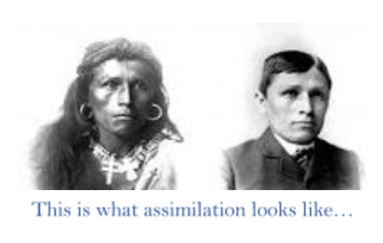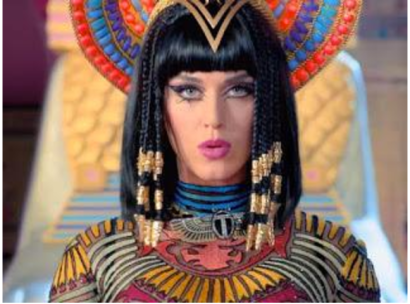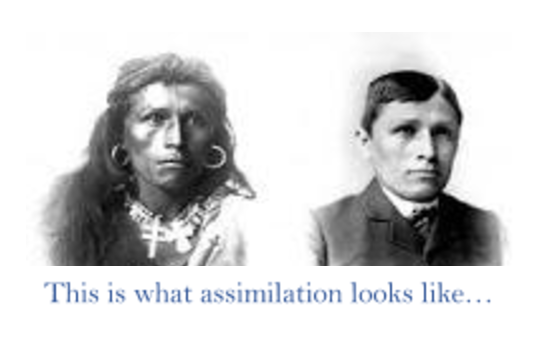When we talk about cultural appropriation and how detrimental it is to ‘minority’ cultures, there is always a rebuttal along the lines of “but minorities appropriate white culture all the time so what’s the big deal?” In my first year of university, after the Christmas break, a white girl who lived on my floor came back with braids. Although we agreed that the hairstyle looked nice, the black girls I spoke to felt a certain way about it but the black boys couldn’t understand why we felt the way we did. One of the boys said, “isn’t it the same as you black girls wearing blonde weaves?”. And the answer is it isn’t. To really understand why they are not the same thing, we must understand the difference between appropriation and assimilation.
Assimilation: the process whereby a minority group gradually adapts the customs and attitudes of the prevailing culture.
Assimilation can be a conscious decision for some, but on a wider scale, this isn’t always the case. Assimilation usually happens because we are conditioned to view our cultures as innately inferior to the dominant Euro-American culture. For instance, this is why black women perm or straighten our natural hair

because our hair, in its natural state, is deemed unprofessional.
From a young age, we are taught that our cultures are primitive in comparison to Euro-American culture. We learn that we must alter ourselves to fit in. Success is widely based on how ‘white’ you can appear. We even go as far as ridiculing those who are more reluctant to conform. Like the Indian kid who would rather have curry for lunch than a bacon sandwich.
Now let’s look at appropriation…

Cultural appropriation is the adoption of elements of one culture by members of another (typically more dominant) culture. These elements are mostly used outside of their original cultural context and against the wishes of representatives of the originating culture.
When black people get angry at white people with dreadlocks, it isn’t about the hairstyle itself. It’s about the fact that these hairstyles are riddled with negative stereotypes when seen on black people but are essentially praised on white people. Appropriation is dangerous because it strips away cultural meanings and condenses culture to aesthetics. Reducing other people’s culture to aesthetics, while shaming them for portraying their own culture, is demeaning and disrespectful. The anger is justified.
To put it simply, appropriation is an act of stealing because those who do it do not acknowledge the owners of the culture. Assimilation is having to install a weave to look “presentable” for a job interview, a job that will enable me to feed myself and pay my rent. Appropriation is a costume that can be taken off when the actor wants to if it inconveniences them. As minorities, we don’t have that privilege. Assimilation is a means of survival. Even behind closed doors, it can be difficult to take off.
By Zilla Ansa
@zillaAnsa
zillaansa.com

